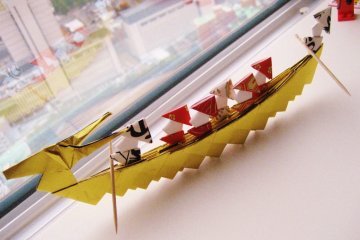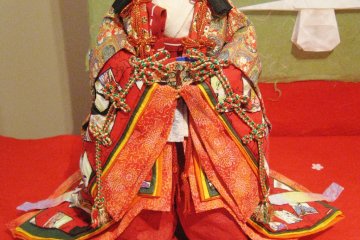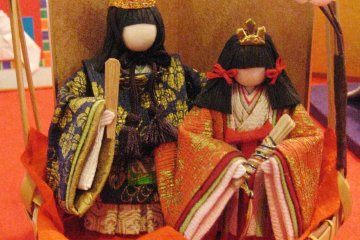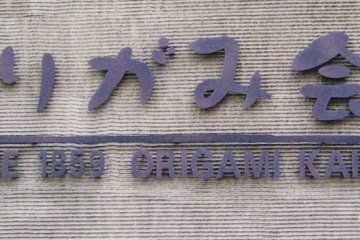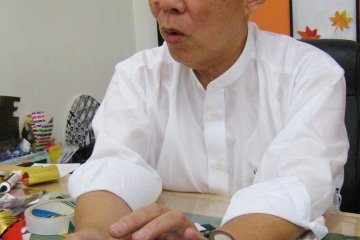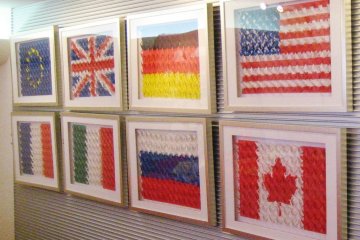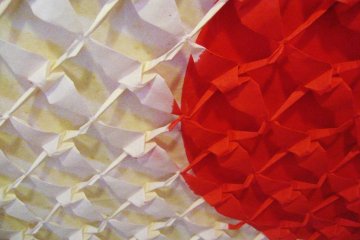From a single sheet of paper a sedge of cranes emerges, joined at head, tail and wing tips. From a small pile of paper beautiful obina and mebina dolls are created, resplendent in their multi-layered clothing. This is the magic of origami. All you need is paper and patience.
Origami translates from Japanese as ‘folded paper’ and spread to Japan from China in the 7th century along with paper-making techniques. From the Edo period (1600-1868) its focus shifted away from making practical items such as envelopes towards creating the exquisite objects for which the art form is known today.
At the Origami Kaikan you can furnish yourself with everything you might need to create some truly beautiful folded paper objects. Check out what it is possible to make and get inspiration for your own work on the mezzanine exhibition floor. Here you can see some examples of amazing origami such as a wall of flags, each made out of 96 cranes folded from a single sheet of paper, or stunning dolls whose clothes look like silk. The exhibitions change every couple of months and are often focussed around a current festival or event.
In the 4th floor factory you can actually observe the process of making and dyeing washi (Japanese hand-made paper). In the well-stocked shop you will find huge individual sheets of washi as well as packets of smaller paper in various sizes. The friendly assistants are more than happy to help you find what you’re looking for. There are also many excellent books on sale, several of which are bi-lingual Japanese/English. A lot of the books have been written or edited by the current director of the Origami Kaikan, Kazuo Kobayashi.
Kobayashi-sensei is very hands-on in his approach to managing the Origami Kaikan. Most Wednesday lunchtimes he can be found sitting in the shop giving a demonstration to visitors. He also teaches many of the classes that the centre offers, details of which can be found on posters around the entrance lobby and in the shop. Sensei’s work combines origami and kirigami, which allows the use of scissors and sometimes glue or tape to attach bits of paper together. His dexterity and effortlessness are fascinating to watch and he loves talking about his work and helping people master particularly difficult folds. If you look interested enough you’re more than likely to be given one of the objects that he makes. On discovering that I hail from London, sensei made me a beautiful rose, “the English flower”.
You can spend as much or as little time and money at the Origami Kaikan as you like. Beware though, origami is terribly addictive once you get into it. I had the brainwave of setting myself the challenge of making senbazuru (1000 origami cranes). After a few 3am finishes I’m currently on around 400. Who knows what’s going to be next! I know whatever it is I’ll be able to find the wherewithal at the Origami Kaikan.







